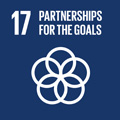- Docente: Gianluca Del Monaco
- Credits: 6
- SSD: L-ART/01
- Language: Italian
- Teaching Mode: Traditional lectures
- Campus: Bologna
- Corso: First cycle degree programme (L) in Drama, Art and Music Studies (cod. 5821)
-
from Mar 31, 2025 to May 15, 2025
Learning outcomes
By the end of the course students will: know the main ways written texts were visualized through material images in the Western Middle Ages from the fourth to the fifteenth century; learn to critically analyze artworks in connection to some pivotal texts (Bible, lives of saints, liturgy, theology, classical and vernacular literature, scientific texts) and to place them in the right chronological and geographical coordinates, so as to highlight their relations with the artistic trends and the religious, political and cultural concerns of the time; gain linguistic and communication skills in the field of art history.
Course contents
The course will provide an introductory survey to the main forms of manuscript illumination in the western Middle Ages (e.g. "papyrus style"; figure, inhabited, and historiated initials; full-page miniatures and vignettes), with regards to some particularly important texts as the Bible, the liturgical and scholastic books, alongside showing the interactions with other visual media.
The following topics will be discussed in class:
- The role of crafted image in the western Middle Ages.
- From scroll to codex: the "papyrus style".
- From scroll to codex: full-page miniatures and vignettes.
- The birth and development of the illuminated initial: decorated, zoomorphic, anthropomorphic, figure, inhabited, and historiated initials;
- Decorations in the margins.
Students with SLD or temporary or permanent disabilities. It is suggested that they get in touch as soon as possible with the relevant University office (https://site.unibo.it/studenti-con-disabilita-e-dsa/en) and with the lecturer in order to seek together the most effective strategies for following the lessons and/or preparing for the examination.
Readings/Bibliography
Attending students should prepare the following readings in addition to the notes taken in class and the lecture PPTS:
1. Baschet, Jean. 1996. "Immagine." In Enciclopedia dell'Arte Medievale, vol. 7, 335-342. Rome: Treccani. Accessed June 26, 2023. https://www.treccani.it/enciclopedia/immagine_%28Enciclopedia-dell%27-Arte-Medievale%29/.
2. Pächt, Otto. 1986. Book Illumination in the Middle Ages: An Introduction (1984), English translation. London, Oxford, and New York: Harvey Miller, Oxford: Oxford University Press (and later editions).
3. One reading to be chosen between:
- De Hamel, Christopher. 1986 (and later editions). A History of Illuminated Manuscripts, Oxford: Phaidon.
- De Hamel, Christopher, 2016. Meetings with Remarkable Manuscripts, London: Allen Lane.
- De Hamel, Christopher, 2022. The Posthumous Papers of the Manuscripts Club, London: Allen Lane.
- Toubert, Helène. 1990. "La mise en page de l’illustration." In Mise en page et mise en texte du livre manuscrit, edited by Henri-Jean Martin and Jean Vezin, 353-420. Paris: Éditions du Cercle de la Librairie-Promodis.
Non-attending students should also prepare as substitutive readings for the notes taken in class and the lecture PPTS the following entries of the Enciclopedia dell'Arte Medievale Treccani:
- Cecchini, Francesca. 2000. "Vangeli." In Enciclopedia dell’Arte Medievale, vol. 11, 493-505. Rome: Treccani. Accessed June 26, 2023. https://www.treccani.it/enciclopedia/vangeli_%28Enciclopedia-dell%27-Arte-Medievale%29/.
- Kessler, Herbert L. 1992. "Bibbia." In Enciclopedia dell’Arte Medievale, vol. 3, 468-487, esp. 475-481. Rome: Treccani. Accessed June 26, 2023. https://www.treccani.it/enciclopedia/bibbia_%28Enciclopedia-dell%27-Arte-Medievale%29/.
- Miglio, Luisa. 1996. "Illustrazione." In Enciclopedia dell’Arte Medievale, vol. 7, 328-335. Rome: Treccani. Accessed June 26, 2023. https://www.treccani.it/enciclopedia/illustrazione_%28Enciclopedia-dell%27-Arte-Medievale%29/.
- Palazzo, Eric. 1996. "Libri liturgici." In Enciclopedia dell’Arte Medievale, vol. 7, 646-653. Rome: Treccani. Accessed June 26, 2023. https://www.treccani.it/enciclopedia/libri-liturgici_%28Enciclopedia-dell%27-Arte-Medievale%29/.
- Freeman Sandler, Lucy. "Salterio." In Enciclopedia dell’Arte Medievale, vol. 10, 281-288, esp. 283-288. Rome: Treccani. Accessed June 26, 2023. https://www.treccani.it/enciclopedia/salterio_%28Enciclopedia-dell%27-Arte-Medievale%29/.
Teaching methods
Frontal and partecipative teaching lessons, supported by PPT images, possible visits to collections in Bologna and/or other Italian cities.
Assessment methods
Oral exam: attending students should discuss one of the PPT slides presented in class without captions and examine the listed readings; non-attending students should deal with the listed readings.
Students with SLD or temporary or permanent disabilities. It is necessary to contact the relevant University office (https://site.unibo.it/studenti-con-disabilita-e-dsa/en) with ample time in advance: the office will propose some adjustments, which must in any case be submitted 15 days in advance to the lecturer, who will assess the appropriateness of these in relation to the teaching objectives.
Teaching tools
PPT presentations.
Office hours
See the website of Gianluca Del Monaco
SDGs


This teaching activity contributes to the achievement of the Sustainable Development Goals of the UN 2030 Agenda.
